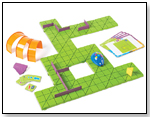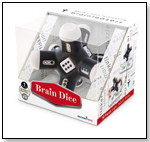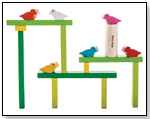|
|
Event Marketing Guru’s Corner: Harvesting Leads for Sales Part I: Establishing Measurable Objectives and Questions
According to the Center of Exhibition Industry Research (CEIR), “91 percent of decision–makers prefer to make purchasing decisions at exhibitions,” versus any other marketing medium. 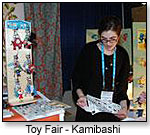 If that’s the case, why are tradeshows under such scrutiny when budgetary cutbacks become necessary? The answer resides in the fact that they are big-ticket, stand-alone budget “line items” that are not easily traced to the bottom line. Fortunately, the ability to trace measurable results is exponentially improving with the aid of the latest event communications technologies. At the same time, it is your job as a savvy event marketer to systematize an effective and efficient lead management system. If that’s the case, why are tradeshows under such scrutiny when budgetary cutbacks become necessary? The answer resides in the fact that they are big-ticket, stand-alone budget “line items” that are not easily traced to the bottom line. Fortunately, the ability to trace measurable results is exponentially improving with the aid of the latest event communications technologies. At the same time, it is your job as a savvy event marketer to systematize an effective and efficient lead management system.“Almost 80 percent of the total leads gathered at tradeshows never receive a follow-up communication,” CEIR found. This statistic is ludicrous because leads are what successful event marketing is all about, and mortifying because of the financial resources and opportunity cost of “lost revenues” wasted. Herein lies the great disconnect between “marketing” and “sales.” However, there are steps you can take right away to multiply your effectiveness and measurable results, and thus, close this unnecessary gap. Once management can measure sales derived from tradeshows, those (otherwise inevitable) budget cuts will move elsewhere on the corporate flow charts. SET MEASURABLE AND SPECIFIC OBJECTIVES 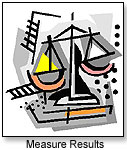 According to CEIR, “Exhibitors who set ‘sales related’ objectives are more successful than those who set ‘other’ objectives for exhibition participation.” Ethereal objectives, such as “We’d like to increase our visibility” or “We want to build an image as the leader of our market segment” provide no functional or tactical goal for any booth staffer. Furthermore, there’s no scientific method for measuring such objectives. According to CEIR, “Exhibitors who set ‘sales related’ objectives are more successful than those who set ‘other’ objectives for exhibition participation.” Ethereal objectives, such as “We’d like to increase our visibility” or “We want to build an image as the leader of our market segment” provide no functional or tactical goal for any booth staffer. Furthermore, there’s no scientific method for measuring such objectives.As my friend, Gary Saphiro, producer of the International Consumer Electronics Show, is fond of stating, “If you can’t measure it, you can’t manage it.” Madison Avenue ad agencies will tell you it’s all about awareness. Along with those who approve expenditures for exhibition, I’m here to tell you that it’s increasingly about selling something. Unlike the previously stated objectives, “obtaining eight highly qualified leads during each staff person’s shift on the exhibit floor” can be achieved and easily measured. To succeed, staff must know how to qualify every prospect (or disqualify every “suspect” in order to maximize return on time), engage them, and proficiently use your selected technology tool for capturing and communicating with these leads. To bridge the disconnect between marketing and sales, it isn’t enough to just make all booth staff accountable for their show performance. You must also make them accountable for tracking qualified leads all the way through the sales process. Now, sales and marketing are collaborating in a coordinated manner. CONSTRUCT AN EVENT-SPECIFIC LEAD SYSTEM Swiping a badge through a card reader does not result in a qualified sales lead, nor does attaining an RFID reading. Jotting down notes on the back of a business card (alone) will not pass the test, either. As much specific and focused information as possible from each prospect will quickly reveal whether or not further dialogue is needed. It is improvident to expect all attendees to act in an identical pattern during any exhibit floor exchange. Therefore, design a lead capture system that ensures that all staffers ask the right questions to obtain critical information that can be used after the show to close sales. While your company information may vary, there are standard questions every lead system should contain: Who? What? When? Why? And How? • Buyer Category: Define each segment of the show attendee profile. • Business Type: Define the various types of clients to whom your company sells. • Authority Level: Define the purchasing authority of each prospect (decision maker, influencer, etc.) • Current Product Usage: What does he or she currently buy? • Wish List: What do they wish they had that they don’t have now? • Your Product Fit: Which of your products will fit their wish list? • Follow-Up Action: What would they like you to do after the show? • Follow-Up Training: When would they like you to follow up? All questions should be worded succinctly to save space on your card/form … and to save time during the crucial interaction. In order to quantify the data obtained, each question should have a specific selection of responses. Free-flowing and open-ended (fill-in-the-blank) responses should be avoided in standardized systems, although it is always helpful to take and keep personal notes regarding specific conversations with prospects for your personal future communications. See TDmonthly Magazine’s August issue for Part II of “Harvesting Leads Into Sales.” It will explore proper staff training, lead system selection and follow-up strategies.  Writer's Bio: Charles W. Allen is an independent consultant for professional event marketing solutions and specializes in sales training, motivational speaking and maximizing sponsorship sales. He also serves as executive director of the International Economic Alliance, which originated at Harvard University. Read more articles by this author Writer's Bio: Charles W. Allen is an independent consultant for professional event marketing solutions and specializes in sales training, motivational speaking and maximizing sponsorship sales. He also serves as executive director of the International Economic Alliance, which originated at Harvard University. Read more articles by this author |
| |||||||||||||||||||||||||||||||||
Disclaimer Privacy Policy Career Opportunities
Use of this site constitutes acceptance of our Terms of Use.
© Copyright 2025 PlayZak®, a division of ToyDirectory.com®, Inc.

